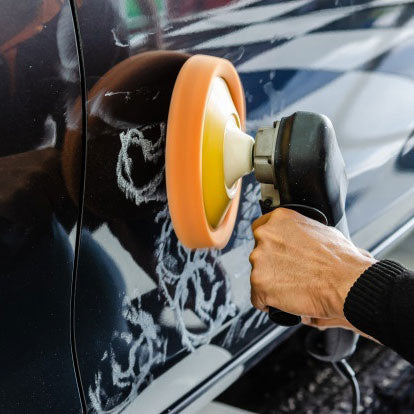The units HLTINF005 -Maintain infection prevention for skin penetration treatments and SHBBINF002 -Maintain infection control standards are both essential components of Australia's vocational education and training (VET) system, that focuses on infection control within the beauty and health industries. While they share similarities in aiming to uphold high standards of hygiene and safety, they differ in their specific applications, target audiences, and the depth of content covered.
1. Overview of HLTINF005

HLTINF005 is a unit that emphasizes maintaining infection prevention during skin penetration treatments. It requires individuals to identify, manage, and control infection risks to clients, themselves, and their colleagues. The unit also involves reviewing clinic compliance with applicable state or territory and local council requirements. This unit is particularly relevant for professionals engaged in procedures like cosmetic tattooing, body tattooing, body piercing, and invasive skin treatments, including skin needling and cosmetic injectables. It is a prerequisite for obtaining the Higher Risk Personal Appearances License, as required by most local councils
2. Overview of SHBBINF002

SHBBINF002 focuses on maintaining infection control standards during skin penetration treatments and reviewing clinic compliance with relevant regulations. It requires the ability to identify, manage, and control infection risks to clients, self, and work colleagues. This unit applies to beauticians and beauty therapists who work in beauty therapy salons, clinics, or cosmetic medical clinics. In this environment, they work autonomously and make independent treatment decisions.
3. Key Differences Between
HLTINF005 and SHBBINF002
a. Target Audience and Industry Application
- HLTINF005: This unit is tailored for professionals involved in skin penetration procedures across various sectors, including beauty therapy, tattooing, and healthcare. It is particularly relevant for those performing high-risk procedures that necessitate a comprehensive understanding of infection prevention protocols.
- SHBBINF002: This unit is specifically designed for beauticians and beauty therapists working in salons, clinics, or cosmetic medical clinics. It focuses on infection control within the beauty industry, emphasizing procedures commonly performed in these settings.
b. Scope of Content
- HLTINF005: The content of this unit is comprehensive, covering a wide range of procedures that involve skin penetration. It delves into detailed infection prevention strategies applicable to various high-risk treatments
- SHBBINF002: While this unit also addresses infection control, its scope is more focused on the beauty industry. It emphasizes maintaining hygiene during beauty treatments and ensuring compliance with industry-specific regulations.
c. Regulatory Requirements
- HLTINF005: Completion of this unit is often a prerequisite for obtaining licenses required to perform high-risk personal appearance services. It aligns with the stringent requirements set by health authorities for procedures that carry a higher risk of infection transmission.
- SHBBINF002: This unit ensures that beauty professionals adhere to infection control standards mandated within the beauty industry. While it emphasizes compliance, the regulatory requirements may vary based on specific state or territory guidelines. Often a pre-requisite to beauty designed qualifications.
d. Practical Application and Assessment
- HLTINF005: The practical components of this unit often involve demonstrating infection prevention techniques across various procedures, reflecting the diverse applications of the skills learned
- SHBBINF002: The practical assessments are typically centred around beauty treatments, with a focus on maintaining infection control within the specific context of beauty therapy services

While both HLTINF005 and SHBBINF002 aim to uphold infection control standards, they cater to different professional settings. HLTINF005 offers a broader perspective suitable for various high-risk procedures, whereas SHBBINF002 provides targeted training for infection control within the beauty industry.
Completing HLTINF005 (Maintain infection prevention for skin penetration treatments) or SHBBINF002 (Maintain infection control standards) offers several benefits, depending on your career goals and industry. Here are the advantages of each:
Benefits of HLTINF005
- Career Opportunities in High-Risk Procedures
- Qualifies you to work in industries such as body piercing, tattooing, microblading, cosmetic tattooing, and dermal therapies.
- Essential for those handling invasive treatments with skin penetration.
- Compliance with Health Regulations
- Meets the legal requirements for infection control in skin penetration services.
- Often a mandatory requirement for obtaining a Higher Risk Personal Appearance Services License in many Australian states.
- Enhanced Client Safety and Trust
- Trains you to identify and minimize infection risks, ensuring safe practices for yourself and clients.
- Builds credibility with clients who value high hygiene standards.
- Competitive Edge in the Industry
- Employers prefer professionals who have undergone proper infection control training, giving you an advantage in job applications.
- Makes you a more desirable candidate in clinics, tattoo studios, and cosmetic treatment centres.
- Versatile Skill Set for Future Growth
- Opens pathways to advanced certifications in skin penetration, cosmetic tattooing, or health-related professions.
- Adds value to professionals who wish to expand their service offerings.
Benefits of SHBBINF002
- Essential for Beauty Professionals
- Ideal for those in beauty therapy, cosmetic clinics, and skin care services.
- Covers infection control for treatments like facials, waxing, dermaplaning, and microdermabrasion.
- Meets Industry Standards
- Ensures compliance with infection control guidelines specific to the beauty industry.
- Helps businesses pass health inspections and maintain licensing.
- Protects Clients and Practitioners
- Reduces the risk of cross-contamination and infectious diseases in beauty salons.
- Builds confidence in handling tools, disinfecting workspaces, and using PPE correctly.
- Increases Employment Prospects
- Many beauty employers require infection control training before hiring.
- Adds credibility and professionalism to your resume.
- Foundation for Further Education
- Can lead to advanced beauty qualifications, such as dermal therapy or paramedical aesthetics.
- A stepping stone if you want to specialize in advanced beauty treatments.
Which Course Should You Choose?

- If you want to work in body piercing, tattooing, or invasive skin treatments, go for HLTINF005.
- If you're in beauty therapy, skincare, or cosmetic services, SHBBINF002 is more relevant.
Both courses improve career opportunities, ensure legal compliance, and help maintain high hygiene standards, making them valuable investments for professionals in the personal appearance industry. Please ensure you check with your local council if one falls under requirement for your location or with your course advisor which specifically may be needed as a pre- requisite.
Both HLTINF005 and SHBBINF002 are essential, ensuring infection control across different sectors of the personal appearance industry. While they share a common goal of minimizing health risks and maintaining hygiene standards, they cater to distinct professional needs.
Choosing the right course depends on your career goals and the services you plan to offer. Both certifications enhance employment opportunities, provide a competitive edge, and instil confidence in maintaining safe work practices. Ultimately, whether in beauty therapy or skin penetration treatments, completing one of these courses is an investment in professional growth, legal compliance, and client safety.
For more information on these courses and how to obtain the qualification please follow the link below:
HLTINF005 Maintain Infection Control in Skin Penetration Treatments
SHBBINF002 Maintain infection control standards

Jaz Anna



